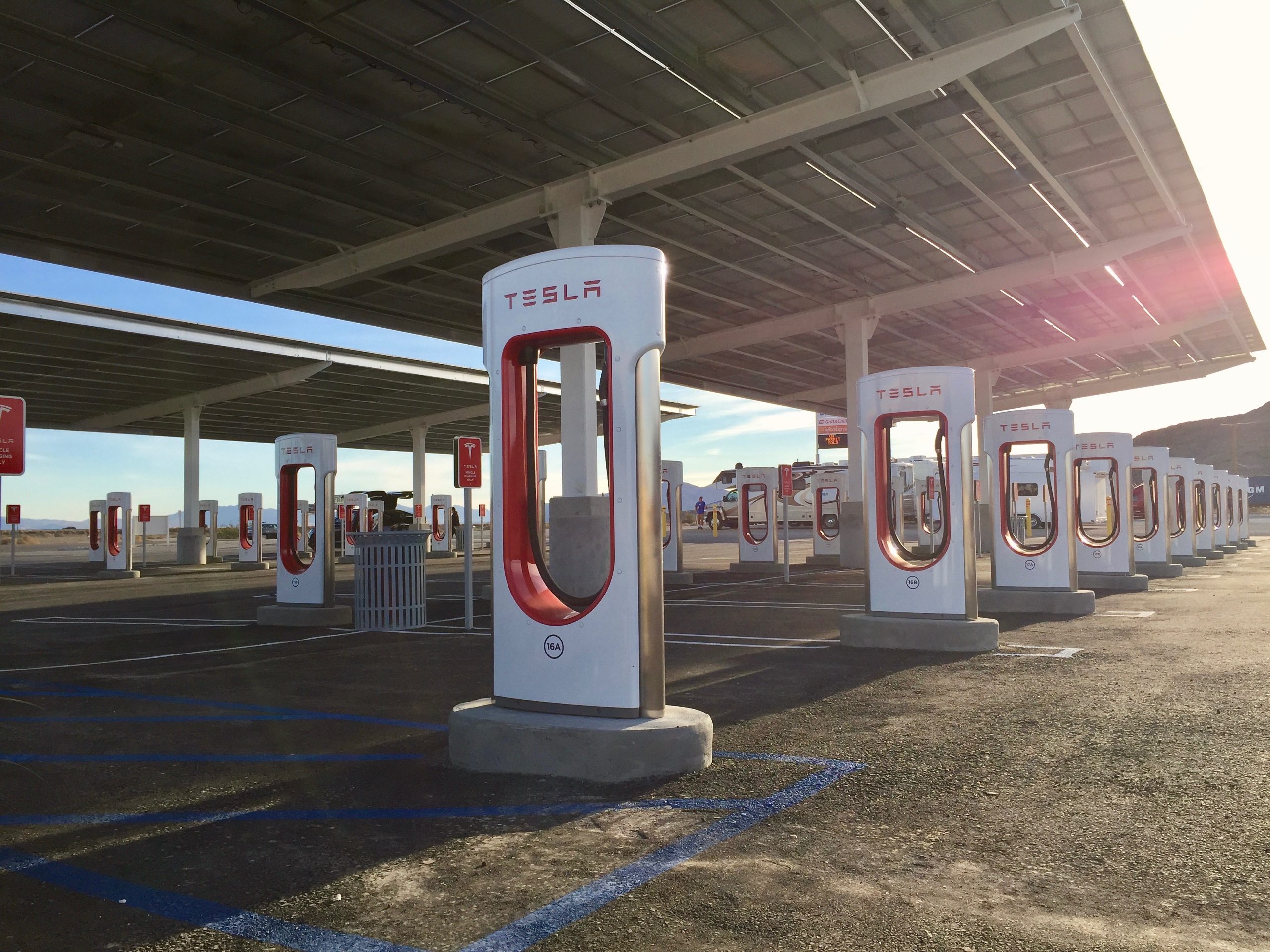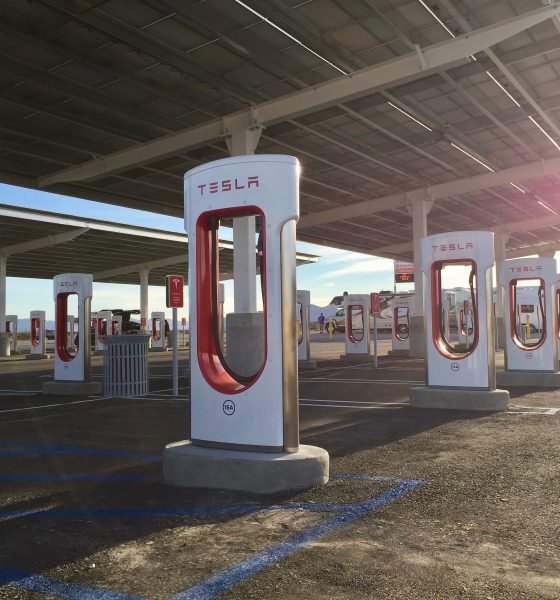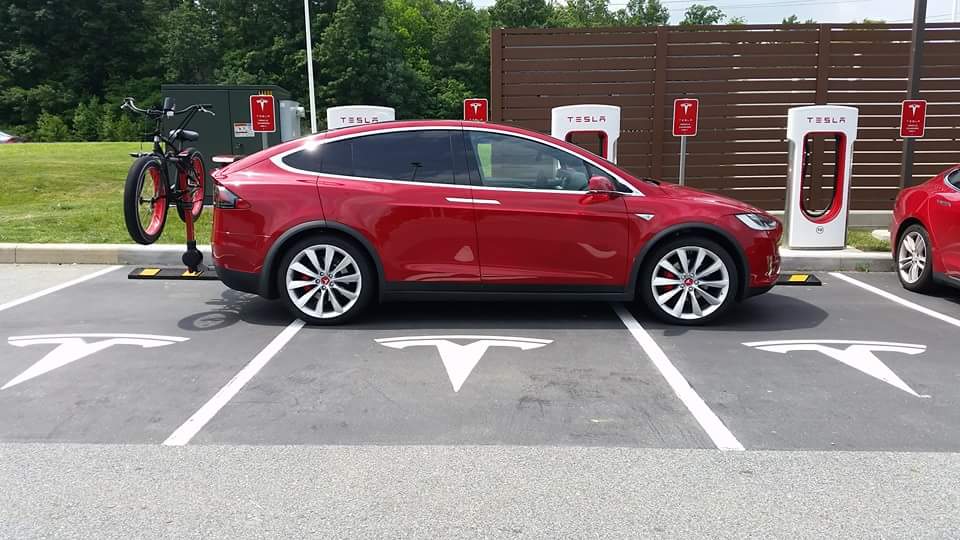

News
Tesla updates Supercharger pricing structure, rolls out in-car payment feature
Tesla has updated the pricing structure for its Supercharger network, including terms for its existing idle fee policy. The idle fee update will impact all Model S, Model X, and Model 3 drivers that utilize the company’s high-powered, global charging network, regardless of whether they are enrolled in free unlimited Supercharging or not.
Supercharger idle fees, first introduced in late 2016 as a means to deter vehicle owners from occupying a charging stall when the vehicle has already met its intended state of charge, have been updated to further encourage owners to move their vehicles from stalls and improve the Supercharging experience for all drivers. Tesla has updated the flat idle fee of $0.40/minute to take into account station occupancy, as follows:
Supercharger Idle Fee
(updated September 19, 2018)
- Supercharger 50% occupied: $0.50/minute idle fee
- Supercharger 100% occupied: $1.00/minute idle fee
Tesla notes in its Supercharger FAQ that drivers will be granted a 5-minute grace period during which time a fee will not be incurred. Once this grace period passes, the driver will be charged for the 5-minutes and each additional minute after that. Vehicle owners will continue to receive reminders through Tesla’s app when the vehicle is nearing its intended state of charge.
In-car Payment
Additionally, Tesla has begun to roll out an over-the-air software update (not Version 9) that will include a new in-car payment feature. The new functionality will provide Model S, Model X, and Model 3 owners who leverage pay-per-use Supercharging with the ability to pay from within their vehicle, by inputting credit card information directly into the center touchscreen. The feature will also enable drivers to pay for any incurred idle fees.
The in-car payment functionality is an extension of the credit card section within an owner’s Tesla Account page, or previously known as the MyTesla page. Credit card information entered through the in-car payment feature will automatically be registered to the vehicle owner’s Tesla account and also serve as payment for any incurred idle fees or Supercharger use fees.
Also introduced in today’s Supercharger pricing structure update is a $50.00 cap wherein Supercharger access will automatically be disabled if there’s an outstanding balance due for Supercharger fees, either incurred through idle fees or Pay Per Use, and when a credit card is not on file. Supercharger access will instantly re-enable once the balance is paid. Tesla will also have the ability to grant Supercharger access to a vehicle, remotely, in the event of an emergency.
The pricing update and software release are being implemented in North America first, followed by a global rollout.
It’s About the Greater Good
Although the latest Supercharger update may be unwelcomed by some Tesla owners that have previously benefitted from the company’s good faith gesture to extend its charging network, largely unenforced, to its drivers, the change is an improvement to its policy that has a significant benefit to the overall community.
When the Silicon Valley-based electric carmaker first created its Supercharger network, the intention was to make long-distance travel an enjoyable and seamless experience for all drivers. But as Supercharger abuse became more rampant, combined with a massive increase in the number of Model S, Model X and Model 3 on the roads, being able to institute some sort of Supercharger fair-use enforcement policy became desperately needed. This is in spite of Tesla’s continued global scale out of its Supercharger and Destination charging network.

A Model X spotted occupying three Supercharger stalls at the Newark, DE Supercharger station went viral in 2016 after sparking outrage across the Tesla community.
Related: Calling all Tesla Supercharger abusers: Don’t ruin it for the rest of us
Today’s update to Tesla’s Supercharger policy will undoubtedly be one of many in the years to come, as the company continues to adjust and iterate toward a customer experience-focused model that’s also financially feasible.
A Tesla spokesperson tells Teslarati, “Based on feedback from the Tesla owner community, we are adjusting the idle fees associated with our Supercharging program to continue providing the best Supercharging experience as the size of our fleet grows. As has always been the case, our Supercharging and associated fees charged on the network are not meant to be a profit center for Tesla, and we hope to never need to bill for idle fees.”
More information can be found on Tesla’s Supercharger page.

News
Tesla FSD fleet is nearing 7 billion total miles, including 2.5 billion city miles
As can be seen on Tesla’s official FSD webpage, vehicles equipped with the system have now navigated over 6.99 billion miles.

Tesla’s Full Self-Driving (Supervised) fleet is closing in on almost 7 billion total miles driven, as per data posted by the company on its official FSD webpage.
These figures hint at the massive scale of data fueling Tesla’s rapid FSD improvements, which have been quite notable as of late.
FSD mileage milestones
As can be seen on Tesla’s official FSD webpage, vehicles equipped with the system have now navigated over 6.99 billion miles. Tesla owner and avid FSD tester Whole Mars Catalog also shared a screenshot indicating that from the nearly 7 billion miles traveled by the FSD fleet, more than 2.5 billion miles were driven inside cities.
City miles are particularly valuable for complex urban scenarios like unprotected turns, pedestrian interactions, and traffic lights. This is also the difference-maker for FSD, as only complex solutions, such as Waymo’s self-driving taxis, operate similarly on inner-city streets. And even then, incidents such as the San Francisco blackouts have proven challenging for sensor-rich vehicles like Waymos.
Tesla’s data edge
Tesla has a number of advantages in the autonomous vehicle sector, one of which is the size of its fleet and the number of vehicles training FSD on real-world roads. Tesla’s nearly 7 billion FSD miles then allow the company to roll out updates that make its vehicles behave like they are being driven by experienced drivers, even if they are operating on their own.
So notable are Tesla’s improvements to FSD that NVIDIA Director of Robotics Jim Fan, after experiencing FSD v14, noted that the system is the first AI that passes what he described as a “Physical Turing Test.”
“Despite knowing exactly how robot learning works, I still find it magical watching the steering wheel turn by itself. First it feels surreal, next it becomes routine. Then, like the smartphone, taking it away actively hurts. This is how humanity gets rewired and glued to god-like technologies,” Fan wrote in a post on X.
News
Tesla starts showing how FSD will change lives in Europe
Local officials tested the system on narrow country roads and were impressed by FSD’s smooth, human-like driving, with some calling the service a game-changer for everyday life in areas that are far from urban centers.

Tesla has launched Europe’s first public shuttle service using Full Self-Driving (Supervised) in the rural Eifelkreis Bitburg-Prüm region of Germany, demonstrating how the technology can restore independence and mobility for people who struggle with limited transport options.
Local officials tested the system on narrow country roads and were impressed by FSD’s smooth, human-like driving, with some calling the service a game-changer for everyday life in areas that are far from urban centers.
Officials see real impact on rural residents
Arzfeld Mayor Johannes Kuhl and District Administrator Andreas Kruppert personally tested the Tesla shuttle service. This allowed them to see just how well FSD navigated winding lanes and rural roads confidently. Kruppert said, “Autonomous driving sounds like science fiction to many, but we simply see here that it works totally well in rural regions too.” Kuhl, for his part, also noted that FSD “feels like a very experienced driver.”
The pilot complements the area’s “Citizen Bus” program, which provides on-demand rides for elderly residents who can no longer drive themselves. Tesla Europe shared a video of a demonstration of the service, highlighting how FSD gives people their freedom back, even in places where public transport is not as prevalent.
What the Ministry for Economic Affairs and Transport says
Rhineland-Palatinate’s Minister Daniela Schmitt supported the project, praising the collaboration that made this “first of its kind in Europe” possible. As per the ministry, the rural rollout for the service shows FSD’s potential beyond major cities, and it delivers tangible benefits like grocery runs, doctor visits, and social connections for isolated residents.
“Reliable and flexible mobility is especially vital in rural areas. With the launch of a shuttle service using self-driving vehicles (FSD supervised) by Tesla in the Eifelkreis Bitburg-Prüm, an innovative pilot project is now getting underway that complements local community bus services. It is the first project of its kind in Europe.
“The result is a real gain for rural mobility: greater accessibility, more flexibility and tangible benefits for everyday life. A strong signal for innovation, cooperation and future-oriented mobility beyond urban centers,” the ministry wrote in a LinkedIn post.
News
Tesla China quietly posts Robotaxi-related job listing
Tesla China is currently seeking a Low Voltage Electrical Engineer to work on circuit board design for the company’s autonomous vehicles.

Tesla has posted a new job listing in Shanghai explicitly tied to its Robotaxi program, fueling speculation that the company is preparing to launch its dedicated autonomous ride-hailing service in China.
As noted in the listing, Tesla China is currently seeking a Low Voltage Electrical Engineer to work on circuit board design for the company’s autonomous vehicles.
Robotaxi-specific role
The listing, which was shared on social media platform X by industry watcher @tslaming, suggested that Tesla China is looking to fill the role urgently. The job listing itself specifically mentions that the person hired for the role will be working on the Low Voltage Hardware team, which would design the circuit boards that would serve as the nervous system of the Robotaxi.
Key tasks for the role, as indicated in the job listing, include collaboration with PCB layout, firmware, mechanical, program management, and validation teams, among other responsibilities. The role is based in Shanghai.
China Robotaxi launch
China represents a massive potential market for robotaxis, with its dense urban centers and supportive policies in select cities. Tesla has limited permission to roll out FSD in the country, though despite this, its vehicles have been hailed as among the best in the market when it comes to autonomous features. So far, at least, it appears that China supports Tesla’s FSD and Robotaxi rollout.
This was hinted at in November, when Tesla brought the Cybercab to the 8th China International Import Expo (CIIE) in Shanghai, marking the first time that the autonomous two-seater was brought to the Asia-Pacific region. The vehicle, despite not having a release date in China, received a significant amount of interest among the event’s attendees.








